Animals In Each Ocean Zone
Plumbing the Bounding main Depths
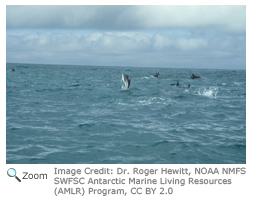 The open up ocean makes up near 65 pct of ocean water. It is the water away from the coastal waters and contains a wide multifariousness of life. The ocean tin can be divided into ii bones areas: the benthic zone or ocean floor and the pelagic zone or ocean waters.
The open up ocean makes up near 65 pct of ocean water. It is the water away from the coastal waters and contains a wide multifariousness of life. The ocean tin can be divided into ii bones areas: the benthic zone or ocean floor and the pelagic zone or ocean waters.
From Sunlight to Darkness
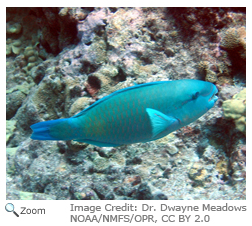 The pelagic region is divided into iii zones. The tiptop zone is the euphotic or sunlit zone. This is the sea zone that sunlight penetrates. Because this zone gets sunlight, photosynthesis can occur and plants can grow here. The sunlit zone goes downward to most 660 feet. The next zone is the dysphotic or twilight zone. Some sunlight reaches this zone, but not enough for photosynthesis to occur. The dysphotic zone goes down to nearly three,300 feet. The last zone is the aphotic or midnight zone. No sunlight reaches this zone and it can reach depths of close to 20,000 feet. Sometimes people divide the midnight zone into two zones: the aphotic zone and the abyss.
The pelagic region is divided into iii zones. The tiptop zone is the euphotic or sunlit zone. This is the sea zone that sunlight penetrates. Because this zone gets sunlight, photosynthesis can occur and plants can grow here. The sunlit zone goes downward to most 660 feet. The next zone is the dysphotic or twilight zone. Some sunlight reaches this zone, but not enough for photosynthesis to occur. The dysphotic zone goes down to nearly three,300 feet. The last zone is the aphotic or midnight zone. No sunlight reaches this zone and it can reach depths of close to 20,000 feet. Sometimes people divide the midnight zone into two zones: the aphotic zone and the abyss. Let the Lord's day Smooth In
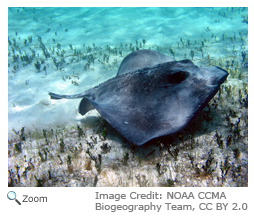 The sunlit zone is habitation to a wide variety of marine species considering plants can abound there and water temperatures are relatively warm. Lots of marine animals can be institute in the sunlit zone including sharks, tuna, mackerel, jellyfish, ocean turtles, seals and sea lions and stingrays. There are not a lot of places to hibernate in the sunlit zone! Some species have an adaptation chosen countershading. These animals are dark on the top and lighter on their undersides. When a predator is looking downward on them from higher up, they blend into the darker waters below. When a predator is looking at them from below, they blend into the lighter waters above.
The sunlit zone is habitation to a wide variety of marine species considering plants can abound there and water temperatures are relatively warm. Lots of marine animals can be institute in the sunlit zone including sharks, tuna, mackerel, jellyfish, ocean turtles, seals and sea lions and stingrays. There are not a lot of places to hibernate in the sunlit zone! Some species have an adaptation chosen countershading. These animals are dark on the top and lighter on their undersides. When a predator is looking downward on them from higher up, they blend into the darker waters below. When a predator is looking at them from below, they blend into the lighter waters above. Inbound the Twilight Zone
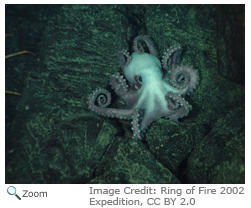 Animals that alive in the twilight zone must exist able to survive cold temperatures, an increase in water pressure and nighttime waters. There are no plants in this zone, considering in that location is not enough lite for photosynthesis. Octopus, squid, and the hatchet fish are some of the animals that tin can be found in this zone.
Animals that alive in the twilight zone must exist able to survive cold temperatures, an increase in water pressure and nighttime waters. There are no plants in this zone, considering in that location is not enough lite for photosynthesis. Octopus, squid, and the hatchet fish are some of the animals that tin can be found in this zone.
Many animals in this zone have thin bodies that aid them hide from predators. Other organisms in this zone are cherry-red or black in colour to better blend in with the dark water. When a predator is looking up at them, they are so sparse that they are difficult to meet!
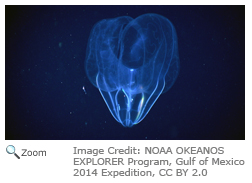 Some fish, similar viper fish and the hatchet fish, have sharp fangs and big mouths that help them catch nutrient. Other fish have big eyes that help them encounter in the nighttime waters. Nigh of the fish in this zone don't hunt their nutrient. They either stem it or expect for it to float or swim by. Some animals that live in this zone brand their ain light with bioluminescence. They make light with special organs in their bodies called photophores. The photophores give off a greenish low-cal.
Some fish, similar viper fish and the hatchet fish, have sharp fangs and big mouths that help them catch nutrient. Other fish have big eyes that help them encounter in the nighttime waters. Nigh of the fish in this zone don't hunt their nutrient. They either stem it or expect for it to float or swim by. Some animals that live in this zone brand their ain light with bioluminescence. They make light with special organs in their bodies called photophores. The photophores give off a greenish low-cal.
Deep in Darkness
It is very cold and completely nighttime in the midnight zone. Water pressure can be every bit much as two tons per square inch. Life isn't easy here and this zone has fewer organisms than the other zones. Because in that location is no light in this zone, some animals don't have eyes. At that place are no plants in this zone.
Animals In Each Ocean Zone,
Source: https://nhpbs.org/natureworks/nwep6c.htm
Posted by: campbellwathre.blogspot.com


0 Response to "Animals In Each Ocean Zone"
Post a Comment